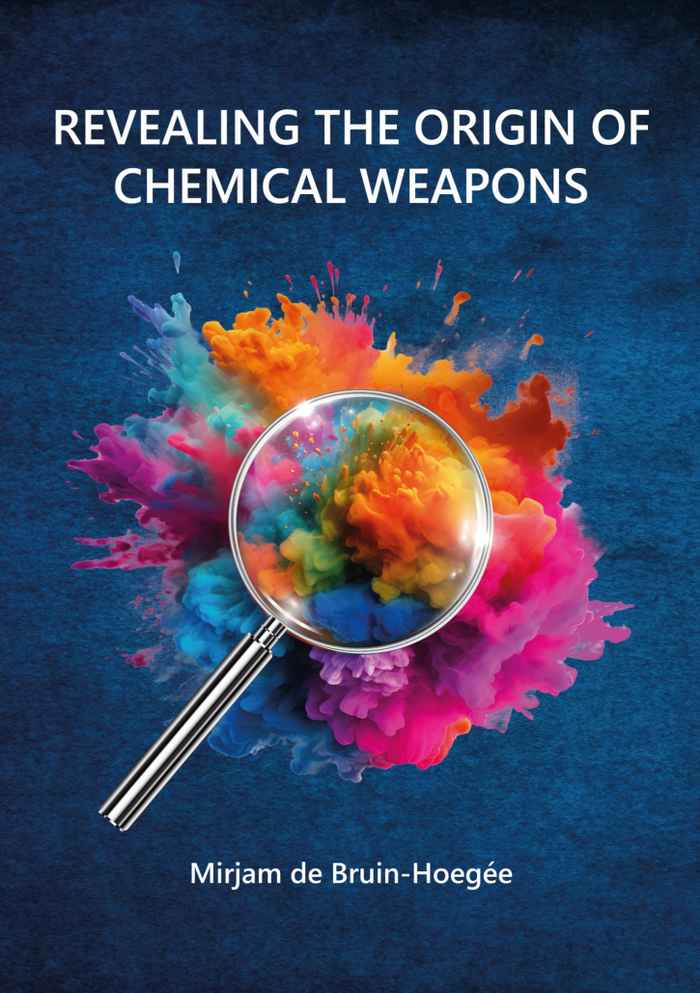Plant biomarkers help determine exposure to chlorine gas used as a chemical weapon
6 June 2024

The use of chlorine gas near Ypres in World War I (April 1915) has started an era of using poisonous gases for war purposes which, in violation of the international Chemical Weapons Convention, continues to date. Unfortunately, even after more than a century of scientific progress, it is still difficult to unambiguously verify the use of chlorine as a chemical weapon. For one thing, it has proven problematic to differentiate from the application of less harmful chlorinating agents such as household bleach.
In their paper in Forensic Science International, De Bruin - Hoegée and coworkers at the van ‘t Hoff Institute for Molecular Sciences (University of Amsterdam) and TNO Defence, Safety and Security, (Rijswijk, the Netherlands) now present a method of detecting the use of chlorine gas in warfare even months after exposure. They resorted to common vegetation such as green spire (Euonymus japonicus), stinging nettle (Urtica dioica), and feathergrass (Stipa tenuifolia) and investigated if and how these could carry telltale signs of chlorine gas exposure.
Using high resolution mass spectrometric analysis and machine learning techniques, the researchers were able to identify biomarkers that reveal the use of chlorine gas. These set of chlorinated plant molecules enabled differentiation from exposure to other chlorinating agents (household bleach, pool bleach, and concentrated sodium hypochlorite). Furthermore, it turned out that they could be identified in plants even months after exposure.
Mirjam de Bruin-Hoegée performed the research as part of her PhD study under supervision of Arian van Asten, professor of Forensic Analytical Chemistry and On Scene Chemical Analysis at the University of Amsterdam and one of the directors of the Amsterdam Center for Forensic Science and Medicine (CLHC). She will defend her thesis on 12 June at the University of Amsterdam. The work was partially funded by the European Union, through a research contract awarded by the Organisation for the Prohibition of Chemical Weapons (OPCW), in support of the Plant Biomarker Challenge. It is also part of the Forensic Attribution for CWA INtelliGence (FACING) project, a collaboration between the Van 't Hoff Institute for Molecular Sciences (HIMS) of the University of Amsterdam and TNO Defence, Safety & Security. The FACING project is financed by the DO-AIO fund of the Dutch Ministry of Defence.
Paper abstract
Since its first employment in World War I, chlorine gas has often been used as chemical warfare agent. Unfortunately, after suspected release, it is difficult to prove the use of chlorine as a chemical weapon and unambiguous verification is still challenging. Furthermore, similar evidence can be found for exposure to chlorine gas and other, less harmful chlorinating agents. Therefore, the current study aims to use untargeted high resolution mass spectrometric analysis of chlorinated biomarkers together with machine learning techniques to be able to differentiate between exposure of plants to various chlorinating agents. Green spire (Euonymus japonicus), stinging nettle (Urtica dioica), and feathergrass (Stipa tenuifolia) were exposed to 1000 and 7500 ppm chlorine gas and household bleach, pool bleach, and concentrated sodium hypochlorite. After sample preparation and digestion, the samples were analyzed by liquid chromatography high resolution tandem mass spectrometry (LC-HRMS/MS) and liquid chromatography tandem mass spectrometry (LC-MS/MS). More than 150 chlorinated compounds including plant fatty acids, proteins, and DNA adducts were tentatively identified. Principal component analysis (PCA) and linear discriminant analysis (LDA) showed clear discrimination between chlorine gas and bleach exposure and grouping of the samples according to chlorine concentration and type of bleach. The identity of a set of novel biomarkers was confirmed using commercially available or synthetic reference standards. Chlorodopamine, dichlorodopamine, and trichlorodopamine were identified as specific markers for chlorine gas exposure. Fenclonine (Cl-Phe), 3-chlorotyrosine (Cl-Tyr), 3,5-dichlorotyrosine (di-Cl-Tyr), and 5-chlorocytosine (Cl-Cyt) were more abundantly present in plants after chlorine contact. In contrast, the DNA adduct 2-amino-6-chloropurine (Cl-Ade) was identified in both types of samples at a similar level. None of these chlorinated biomarkers were observed in untreated samples. The DNA adducts Cl-Cyt and Cl-Ade could clearly be identified even three months after the actual exposure. This study demonstrates the feasibility of forensic biomarker profiling in plants to distinguish between exposure to chlorine gas and bleach.
Paper details
Mirjam de Bruin-Hoegée, Marcel J. van der Schans, Jan P. Langenberg, Arian C. van Asten: Biomarker profiling in plants to distinguish between exposure to chlorine gas and bleach using LC-HRMS/MS and chemometrics. Forensic Science International, Volume 358, 2024, 112022, ISSN 0379-0738. DOI: 10.1016/j.forsciint.2024.112022

Thesis details
J.M. de Bruin-Hoegée: Revealing the origin of chemical weapons
Supervisors: A.C. van Asten, P.J. Schoenmakers
Co-supervisors D. Noort, M.J. van der Schans
Download the thesis from the UvA repository
See also
- New forensic research reveals chemical weapons 'fingerprint'
- Finding evidence in plants for the use of chemical weapons
- Website Mirjam de Bruin - Hoegée: forensicscientist.nl